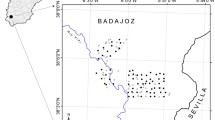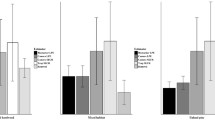Abstract
Ecological theory and wildlife management often depend on reliable comparison and interpretation of population density estimates. A synthesis of 1,772 mammalian carnivore population estimates (713 unique to reference, species, site, and size of study area) from 74 species revealed global patterns among aspects of study and interpretive design that undermine the reliability and usefulness of density comparisons. The spatial extent of the study area could explain most of the variation in density, probably because study areas are typically delineated around population clusters. We related the scale-defined density estimates (regression residuals) to 28 other variables measured from the published literature, but none provided convincing biological explanation of the variation in density. Many aspects of study and interpretive design were possibly ill-suited to identifying the factor(s) influencing density. Study attributes and findings were reported inconsistently, and were subject to ideological motivations. Descriptions of vegetation were most difficult to relate to density. More intensive sampling and estimation methods produced above-average density estimates, but the differences were slight and the evidence lacking for concluding whether these more intensive methods were also more accurate. The first underlying factor extracted from principle-components analysis described the growing recognition of population declines and range reductions among large-bodied carnivores, which has also influenced study design. Another factor described an increasing trend for density to be compared and extrapolated to larger areas, but without adjusting for the effect of scale. To understand the factors influencing carnivore distribution and abundance, sampling and reporting methods (e.g., site description with maps) will need to represent the available pool of species, locations, and ecological conditions at larger-than-conventional spatial and temporal scales.
Similar content being viewed by others
Author information
Authors and Affiliations
Additional information
Received: 2 January 1997 / Accepted: 23 September 1997
Rights and permissions
About this article
Cite this article
Shawn Smallwood, K., Schonewald, C. Study design and interpretation of mammalian carnivore density estimates. Oecologia 113, 474–491 (1998). https://doi.org/10.1007/s004420050400
Issue Date:
DOI: https://doi.org/10.1007/s004420050400




